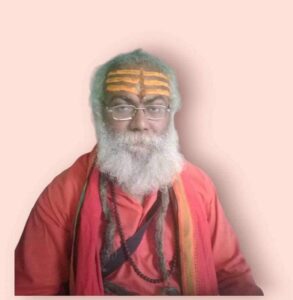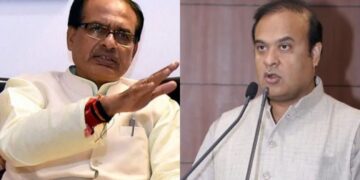SWAMI DIVYA GYAN
 As the Jharkhand Assembly elections approach, the Bharatiya Janata Party (BJP) finds itself navigating a delicate balance between victory and defeat, largely due to internal factionalism, poor candidate selection, and personal rivalries within the party. This long-standing internal strife has been a major challenge for the BJP in Jharkhand, where the difference between forming a government or losing out has often come down to just 5 to 10 seats.
As the Jharkhand Assembly elections approach, the Bharatiya Janata Party (BJP) finds itself navigating a delicate balance between victory and defeat, largely due to internal factionalism, poor candidate selection, and personal rivalries within the party. This long-standing internal strife has been a major challenge for the BJP in Jharkhand, where the difference between forming a government or losing out has often come down to just 5 to 10 seats.
In previous elections, the BJP has often found itself knowingly losing these crucial seats due to wrong candidate choices or internal conflicts. While this time around, party leaders like Himanta Biswa Sarma and Shivraj Singh Chouhan have taken significant steps to address these issues, the question remains: can the BJP overcome the challenges it has created for itself?
Leadership of Sarma and Chouhan
In the current election strategy, the roles of Assam Chief Minister Himanta Biswa Sarma and Union Agriculture Minister Shivraj Singh Chouhan are pivotal. Both are seen as strong pillars of the BJP’s national organization and have worked tirelessly to boost the party’s chances in Jharkhand. Their focus has been to resolve the internal factionalism, personal rivalries, and strategic missteps that have plagued the BJP in the state.

Himanta Biswa Sarma, known as the kingmaker of Northeast India, has a reputation for his tactical expertise and organizational skills. Under his leadership, the BJP has worked extensively at the grassroots level in Jharkhand. Sarma has attempted to harmonize relations between warring factions within the party and create a balanced approach to candidate selection. He believes that a unified and well-coordinated team is essential to securing a BJP victory in the state, where deep social and political divides exist. His influence could be a decisive factor in a state as sensitive as Jharkhand.
Similarly, Shivraj Singh Chouhan brings administrative experience and a deep connection with the party’s grassroots workers. His role in restoring confidence among BJP’s rank and file in Jharkhand has been critical. Chouhan’s strategy focuses on resolving internal issues while building a positive image of the BJP among the people of Jharkhand. His approach emphasizes team cohesion and addressing grievances among local leaders.
Also Read: Jharkhand CM hands over appointment letters to 500 community health officers
Together, Sarma and Chouhan have worked to ensure that past mistakes in candidate selection are not repeated and that internal rivalries do not derail the party’s electoral success. However, overcoming the long-standing factionalism and personal agendas within the Jharkhand BJP is no small feat.
BJP in Kolhan: Expectations from Champai Soren and Madhu Koda
In the Kolhan region, BJP’s electoral fortunes have significantly improved with the inclusion of Champai Soren and Madhu Koda into the party fold. These two leaders bring substantial regional influence that could benefit the BJP. Champai Soren’s entry into the party could help dent the Jharkhand Mukti Morcha (JMM) stronghold over the tribal vote bank, while Madhu Koda’s influence could sway the OBC and tribal votes in BJP’s favour.
However, how the BJP manages its internal politics in Kolhan will be equally critical. The old rivalry between Raghubar Das and Saryu Roy continues to create a rift within the party. In key constituencies like Jamshedpur East and Jamshedpur West, the BJP’s losses in previous elections can be directly attributed to such internal conflicts.
Also Read: Nobel Prize in Economics 2024 awarded to Daron Acemoglu, Simon Johnson, James Robinson
Jamshedpur: Cost of Personal Rivalries
BJP’s performance in Jamshedpur East and Jamshedpur West has been directly impacted by internal rivalries. The longstanding feud between Raghubar Das and Saryu Roy has cost the party dearly. Despite the decision to bar any of Raghubar Das’s family members from contesting, the rivalry deepened when Dhullu Mahto stood against Saryu Roy, further exacerbating tensions.
To make matters worse, certain party leaders fanned the flames by putting forth Rambabu Tiwary’s name, a staunch adversary of Saryu Roy. This has set up a scenario where BJP allies could be at odds with each other, leading to clashes and infighting during the election campaign. The result is a climate that makes it difficult to focus on securing an electoral win.
Bahragora: Personal Agenda Over Party Interests
According to the sources, the situation in Bahragora illustrates yet another example of BJP’s internal factionalism. According to sources, MP Vidyut Varan Mahto has actively worked to keep this seat out of BJP’s hands, as he reportedly wants to reserve it for his son in the 2029 elections. Despite BJP’s losses here for three consecutive terms, Mahto’s influence over candidate selection has led to the party putting up a weak candidate who has never won an election before. This personal agenda continues to undermine the BJP’s prospects in the region.
Complexities of Kolhan Politics
The political rivalry between Arjun Munda and Madhu Koda, alongside the Kurmi movement, is another classic example of BJP’s internal turmoil and factionalism. According to sources, Arjun Munda had worked behind the scenes to sideline Madhu Koda from politics. This rivalry spilt over into the broader political landscape, particularly affecting the Kurmi community, a significant voting bloc in Jharkhand.
The Kurmi movement, led by Shailendra Mahto, saw growing dissatisfaction against Arjun Munda within the community. Mahto’s leadership of the movement created internal divisions within the BJP, severely impacting its tribal and OBC vote base. His Kurmi agitation played a pivotal role in weakening Munda’s political stronghold, and as sources suggest, even as a Union Minister, Munda suffered a major defeat in Khunti Lok Sabha due to the ripple effect of this agitation.
Madhu Koda capitalized on this unrest by aligning himself with the Kurmi movement, further alienating Munda’s support base. This internal strife, coupled with the broader Kurmi agitation, resulted in significant setbacks for the BJP in Jharkhand, especially in seats falling under the Kolhan region.
Santhal Pargana: Rift Between Nishikant Dubey and MLAs
In Santhal Pargana, the BJP faces even more severe challenges. The long-standing rift between MP Nishikant Dubey and several BJP MLAs has weakened the party’s prospects. According to sources, during the last Lok Sabha elections, many BJP MLAs actively worked against Nishikant Dubey, and now in the upcoming Assembly elections, these divisions persist.
In this tribal-dominated region, the BJP has traditionally struggled to gain a foothold, and the internal factionalism only worsens the party’s chances. If the BJP hopes to win in Santhal Pargana, it must address the discord between Nishikant Dubey and local legislators.
Dissent in Other Regions: Palamu and Koylanchal
Beyond Kolhan and Santhal Pargana, the BJP is also dealing with dissent in regions like Palamu and Koylanchal. Sources suggest that dissatisfaction among BJP workers is growing, particularly over the appointment of district presidents in Dhanbad and Garhwa. Many workers believe that the leadership’s choice of controversial figures as district heads could hurt the party’s prospects in these crucial areas.
The situation in Palamu is similarly fraught, where growing discontent among the cadre could hinder the BJP’s election preparedness. Local workers have expressed concerns about the party’s candidate selection process and internal management, warning that the lack of unity could prove costly in the polls.
BJP’s Internal Factionalism: A Roadblock to Electoral Success?
The ongoing internal factionalism within the BJP could severely impact the party’s electoral prospects. The party’s leadership must recognize that winning elections requires not only sound strategy and candidate selection but also internal unity and organizational coordination.
BJP’s chances of winning depend on whether the party can successfully resolve its internal disputes. While Himanta Biswa Sarma and Shivraj Singh Chouhan have done extensive work to strengthen the party, their efforts will only bear fruit if local leaders and workers can put aside personal rivalries and work in the party’s collective interest.
Conclusion: The Future of BJP in Jharkhand
The future of the BJP in Jharkhand hinges on how well the party can overcome its internal factionalism and prepare for the elections with a united front.
The BJP’s top leaders, especially Himanta Biswa Sarma and Shivraj Singh Chouhan, have made significant efforts to address the internal issues plaguing the party. However, the party’s electoral success will depend not just on strong leadership, candidate selection, and strategic decisions, but also on whether the party can find the courage to rise above its internal divisions and personal rivalries.










